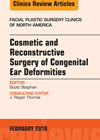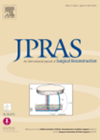
Journal Reviews
Septoplasty revisited
Septoplasty is one of the commonest rhinological surgeries performed. With the advent of minimally invasive surgical concepts, endoscopic targeted septoplasty was introduced. This study aimed to compare the complications and outcomes between endoscopic septoplasty and conventional septoplasty by a PRISMA...
Complications associated with microlaryngoscopy surgery
Microlaryngoscopy procedures are often considered to be routine procedures at the straightforward end of the ENT operative spectrum. Complications associated with this surgery are thought to be infrequent and primarily related to the possibility of dental trauma and adverse voice...
Prominauris: Which surgical technique to use?
Otoplasty accounted for 3.2% of all plastic surgical interventions, and 2.6% worldwide in 2015. Patient satisfaction ranges above 95% for prominent ear correction despite the myriad of available techniques in the literature associated with highly variable outcomes. The authors split...
More is better
The authors reviewed 119 patients undergoing endoscopic sinus surgery for sinonasal polyposis. Of these, 45 patients were operated upon by a traditional functional technique preserving the middle turbinate and keeping its position. In addition, the second group underwent a partial...
Is there a ‘best’ ventilation tube?
Studies on grommet materials and sizes are not exactly new but this was a well-designed randomized study in Sweden with some useful findings. The extrusion rate and complications associated with four different ventilation tubes (grommets) were assessed prospectively in 400...
Multiple free flaps for head and neck cancer
Most patients with advanced head and neck cancers now undergo microvascular free flap reconstruction. This is mainly as flaps facilitate complete tumour and margin removal by providing reliable wound coverage and better restoration of form and function. However despite this,...











